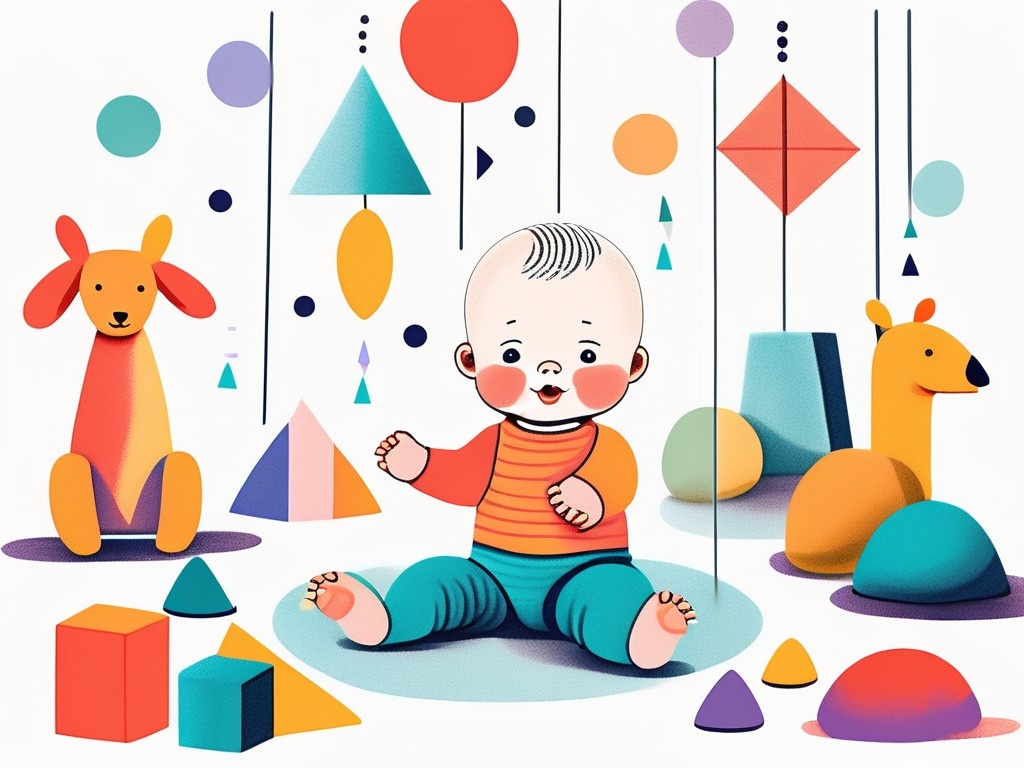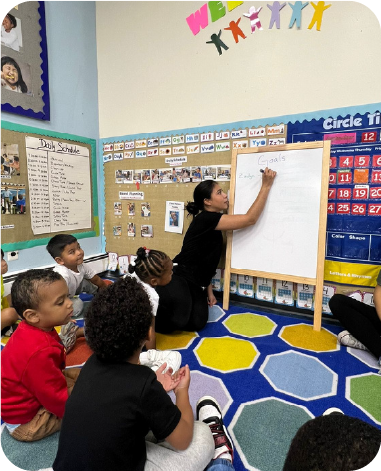Understanding what infants learn first can provide invaluable insight into their development and the various factors that influence it. From sensory experiences to cognitive milestones, the foundation of learning begins at an exceptionally early age. This article delves into the complexities of infant learning, unraveling the intricate web of genetics, environment, sensory experiences, cognitive skills, and social and emotional growth.
Understanding Infant Development
Infant development is a multifaceted journey. During the first few years of life, infants undergo rapid changes, both physically and mentally. These changes lay the groundwork for later learning and overall development. It’s essential to consider the interplay between different elements that contribute to this process.

The role of both genetics and environment cannot be understated. Genetics offers a blueprint for potential, while the environment serves as the canvas where these capabilities can flourish. Identifying how these elements interact helps caregivers provide appropriate support for their infants.
The Role of Genetics in Infant Learning
Genetics plays a crucial role in shaping an infant’s learning capabilities. Each infant is born with a unique set of genetic traits that can influence their cognitive abilities, temperament, and even their responsiveness to learning opportunities. Research suggests that inherent traits may predispose an infant towards certain types of learning.
For instance, some infants may naturally gravitate towards auditory learning, while others may excel in visual recognition. Understanding these tendencies can help caregivers tailor experiences that align with the infant’s strengths, fostering an environment conducive to growth. Moreover, genetic predispositions can also affect an infant’s emotional responses, which in turn can influence their social interactions and attachment styles. This intricate web of genetic influences underscores the importance of recognizing individual differences in infants, as it allows caregivers to provide personalized support that nurtures each child’s unique path of development.
The Impact of Environment on Infant Learning
The environment significantly impacts an infant’s learning experiences. The emotional and physical surroundings—ranging from home life to social interactions—serve as powerful catalysts for development. Rich, stimulating environments offer new experiences that engage the senses and promote learning.
Conversely, a lackluster environment may hinder an infant’s ability to explore and learn effectively. Therefore, caregivers should strive to create a supportive atmosphere that encourages exploration and nurtures an infant’s innate curiosity. This can be achieved through simple yet effective strategies, such as providing a variety of toys that stimulate different senses, engaging in interactive play, and fostering social connections with peers and family members. Additionally, the presence of responsive caregivers who engage in meaningful interactions can significantly enhance an infant’s learning experience, as these relationships provide the emotional security necessary for exploration and risk-taking. By understanding the profound impact of both genetics and environment, caregivers can better support their infants’ developmental journeys, ensuring they thrive in a world full of opportunities for growth and discovery.
The First Sensory Experiences
Sensory experiences are essential for infants, as they provide the foundation for learning through their senses. Touch, taste, smell, hearing, and vision are critical components of this early development. Understanding how these senses evolve can shed light on an infant’s learning journey.

The Development of Touch
Touch is often considered the first sense to develop in infants. From the moment they are born, they are capable of feeling and responding to tactile stimuli. Skin-to-skin contact with caregivers not only promotes bonding but also stimulates sensory exploration.
As infants grow, their ability to discriminate between different textures and temperatures enhances. Engaging them in activities that encourage tactile exploration—such as playing with soft toys or textured fabrics—can significantly foster their learning process. Additionally, the act of reaching out and grasping objects helps refine their motor skills, further connecting the physical experience of touch with cognitive development. The more varied the textures they encounter, the richer their sensory vocabulary becomes, laying the groundwork for more complex interactions with their environment.
The Evolution of Taste and Smell
The senses of taste and smell begin to develop in utero. By the time infants are born, they have already been exposed to various flavors and aromas through amniotic fluid. This early exposure can shape their dietary preferences later in life.
Exposing infants to a variety of tastes and smells during the weaning phase can help cultivate a more adventurous palate. Caregivers should offer a range of healthy foods, fostering an appreciation for diverse flavors while laying the groundwork for a balanced diet. Furthermore, the interplay between taste and smell is crucial; these senses work together to create a full flavor experience. Introducing herbs and spices in moderation can not only enhance meals but also stimulate curiosity about food, encouraging infants to explore and enjoy the culinary world as they grow.
Progression of Hearing and Vision
Hearing and vision are pivotal senses that undergo significant development in the early months of life. Newborns are more attuned to high-frequency sounds, which they later learn to differentiate. This ability to recognize familiar voices plays a crucial role in social bonding.
Visual development also progresses at an astounding rate. While infants initially see in black and white, their vision improves rapidly—allowing them to perceive colors and details. Engaging infants with colorful toys and visually stimulating surroundings supports their visual development. Moreover, the contrast between light and dark can capture an infant’s attention, making it beneficial to incorporate high-contrast patterns into their environment. As they grow, the ability to track moving objects and focus on faces becomes increasingly refined, further enhancing their social interactions and emotional connections with caregivers and family members.
Cognitive Skills: The First Milestones
As infants navigate their sensory worlds, they begin to develop cognitive skills that mark the first milestones of learning. These skills are foundational for their later academic and life success.

Recognition of Faces and Expressions
One of the earliest cognitive milestones is the recognition of faces. Infants are born with the innate ability to recognize their caregiver’s face, which not only helps in bonding but also kickstarts their social learning.
By around three months, infants begin to discern different facial expressions, which adds complexity to their social interactions. This recognition is crucial, as it helps them understand emotions and react accordingly. As they grow, infants start to show preferences for familiar faces, often smiling more at those they recognize, which reinforces social bonds and encourages positive interactions. This early social engagement is not just about recognition; it also lays the groundwork for empathy and emotional intelligence, skills that will be vital as they navigate relationships throughout their lives.
Memory Development in Infants
Memory development is another critical aspect of cognitive skills in infants. The ability to retain information, even for short periods, advances rapidly during their first year.
Simple games like peek-a-boo stimulate memory retention and recall. Engaging infants in repetitive activities reinforces these connections, enhancing their cognitive development as they learn to anticipate and predict outcomes. Moreover, as infants begin to recognize patterns in their environment, they start to form memories linked to specific events or experiences, such as the sound of a parent’s voice or the sight of a favorite toy. This burgeoning memory capacity is essential, as it not only aids in learning but also helps infants develop a sense of continuity and security in their world.
Early Problem-Solving Skills
Problem-solving skills begin to emerge in infants as they learn to navigate their environments. From figuring out how to reach a toy to resolving conflicts with peers, these skills lay the foundation for critical thinking.
Caregivers can foster these skills by providing opportunities for exploration and safe challenges, allowing infants to engage in trial and error as they learn how to solve practical problems independently. For instance, toys that require manipulation, such as stacking blocks or simple puzzles, encourage infants to think creatively and develop strategies to achieve their goals. Additionally, as they interact with their surroundings, infants learn cause and effect, such as discovering that pressing a button can produce sound or light. This understanding not only enhances their cognitive abilities but also boosts their confidence as they realize their actions can lead to desired outcomes, setting the stage for more complex problem-solving as they grow.
Social and Emotional Learning in Infants
The social and emotional development of infants is as pivotal as cognitive growth. Understanding emotions and forming social connections are integral parts of their early learning experiences.
The Emergence of Social Smiles
Social smiling typically emerges around six weeks of age. This behavior not only serves as a form of communication but also as a social signal to caregivers, encouraging interaction and bonding.
The act of smiling plays a dual role in both brain development and relationship building, as it fosters an emotional connection that nurtures overall development.
Understanding Emotions: Self and Others
As infants continue to grow, they begin to recognize and understand emotions—not only their own but also those of others. This awareness is vital for developing empathy and emotional intelligence.
This understanding often starts with mimicking the expressions and emotions of caregivers, which gradually evolves into a deeper recognition of feelings. By witnessing and participating in emotional exchanges, infants learn to recognize cues that signify various emotions.
The Beginning of Empathy
Empathy, though a complex skill, begins to sprout during infancy. Infants may start to show signs of empathic behavior, such as comforting a crying peer or reacting with concern to another’s distress.
This initial budding of empathy is critical for establishing healthy social relationships later in life. Opportunities for shared experiences and guided emotional interactions can further nurture this skill during infancy.
In conclusion, the early learning experiences of infants are rich and diverse, encompassing sensory capabilities, cognitive milestones, and emotional growth. By understanding the intricate nuances of how infants learn, caregivers can cultivate environments that promote holistic development and pave the way for a bright future.










